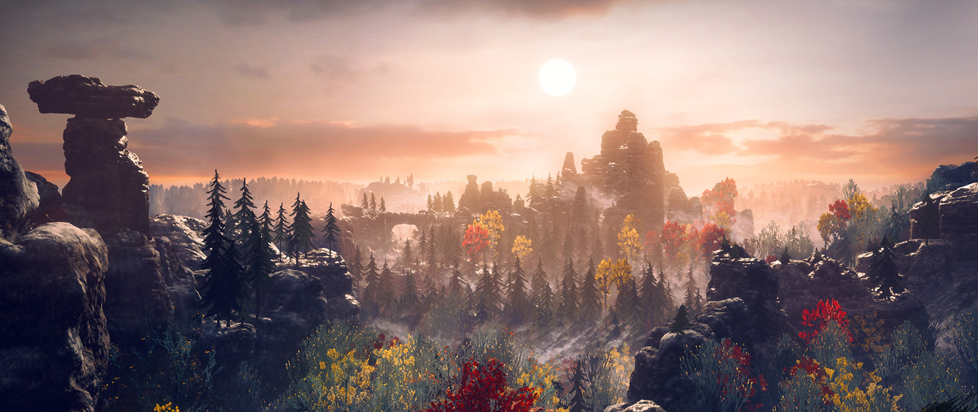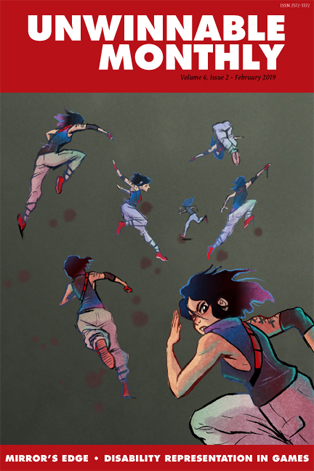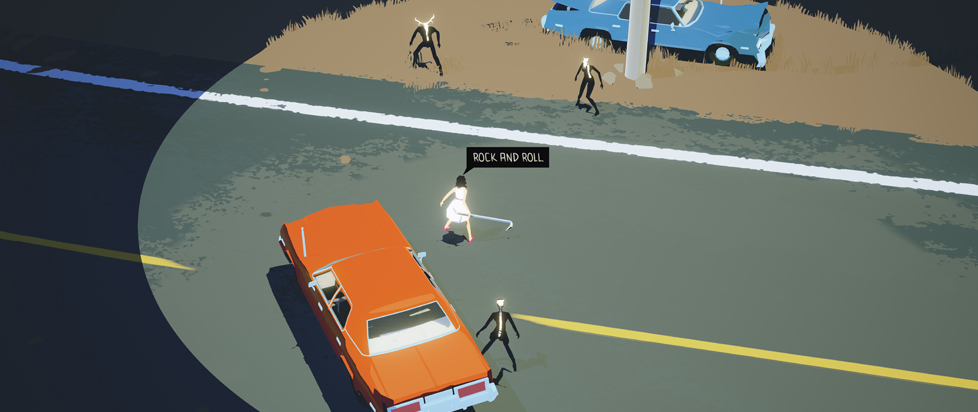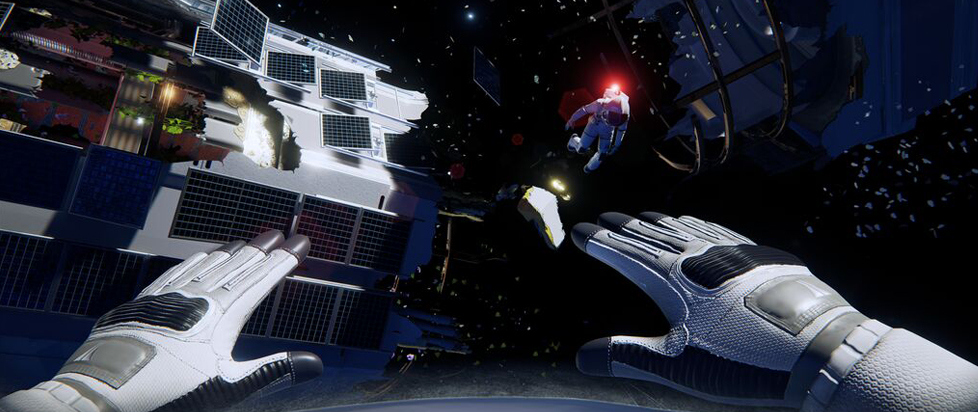
Someday You’ll Return
 This column is a reprint from Unwinnable Monthly #112. If you like what you see, grab the magazine for less than ten dollars, or subscribe and get all future magazines for half price.
This column is a reprint from Unwinnable Monthly #112. If you like what you see, grab the magazine for less than ten dollars, or subscribe and get all future magazines for half price.
———
This series of articles is made possible through the generous sponsorship of Epic’s Unreal Engine. While Epic puts us in touch with our subjects, they have no input or approval in the final story.
———
I think, at this point, it goes without saying that I am big fan of horror. My favorite sorts of horror stories are the ones where the horror intrudes on an otherwise mundane moment from everyday life. Hanging out with friends, walking down the street or, in the case of Someday You’ll Return, going for a hike in the woods.
Of course, in Someday You’ll Return, your reason for going into the woods is unusual. Stela, your daughter, has run away again. You take the role of Daniel, who is forced to go back into a forest to which he swore he’d never return. And, of course, the forest itself is full of strange people and events that will help him understand why Stela keeps running away, that is the way of a horror story.
Despite the unusual circumstances of Daniel’s journey, the idea of the game essentially being a walk in the woods appeals to me because I can walk in the woods (and, indeed, if I was in Eastern Europe, I could walk through these woods). Have you ever been in the woods when it unaccountably darkens? When you hear a twig snap but see no one around? When the atmosphere turns pregnant with the feeling that something is watching, or that something is about to happen?
Perhaps I have an overactive imagination, but I bet you’ve been spooked like that, even momentarily. What better way to start a horror story than with something most people have actually felt? It roots the story in reality and makes whatever fantastic concurrences that follow all the more believable.
Someday You’ll Return is being developed by CBE Software, a two-man indie studio consisting of Lukas Medek and Jan Kavan. They founded the company in 2006, after failing to secure funding for an ambitious sci-fi project, and it was meant to focus on small projects, including the paranormal comedy Ghost in the Sheet, J.U.L.I.A., J.U.L.I.A.: Untold, Vampires: Guide Them to Safety!, Serena and, most recently in 2014, J.U.L.I.A.: Among the Stars.
Jan was kind enough to take the time to discuss the development of Someday You’ll Return with Unwinnable.

I think the thing that immediately appealed to me about Someday You’ll Return is how it simulates something I could do in real life – walk off into the woods with my cell phone. What made you decide to ground the game so firmly in the real world?
When you arrive in the forest, we wanted to simulate the real situation because it’s much easier to destroy it soon after. You may see from the trailer that things will get a bit out of control down the road. But we also feel that many people can really strongly connect with the story because they can identify much easier with a contemporary parent looking for his runaway daughter than if this was set in fantasy or medieval setting. But the reason why would be too much in the spoiler territory.
I feel like a mistake horror themed games often make is to be so obviously weird or spooky in a visual sense that it actually minimizes the horror, something you avoid by presenting a world that hews closely to a plausible reality. Can you tell me a bit about your approach to horror, both broadly and as it relates to game design?
Well, the real horror in case of Someday You’ll Return doesn’t always come from monsters or strange visuals. We play with very strong personal themes which can hide much darker things. The forest is merely an amplifier, a lens through which all mundane gets amplified into horrible proportions. Sometimes, when playing this game, you might question if you are part of evil portrayed by the game.

What is it about this Moravian forest that appealed to you to the extent you wanted to recreate it? How do you go about designing in a way that captures its uniqueness?
It’s the land of our childhood. Actually the game mixes together Southern Moravia, where Lukas spent his childhood, and Northern Bohemia, which is the land of my childhood. Not only we have an intimate knowledge of these parts but we also have our memories, our fears and strange things we encountered there.
Can you expand on the folklore of the region that inspired you to make a horror game?
The game can get really seriously nasty at times. What we are trying to achieve though isn’t your typical jump scare-ish stuff. We want the player to feel less and less comfortable and then downright scared.
We are working with ancient stories and legends in the game, some of them are dated back to 9th century.

Can you expand on the 19th century tourist navigation system? What is it? How does it work?
This system has been used by the Czech Hiking Club since 1888. The entire territory of the Czech Republic is covered with marked trails with detailed maps available. In the Czech Republic, over 70,000 km of hiking trails have been marked this way.
The trail starts with arrow signs with destinations and number of kilometers. Each trail is then color marked by simple markers and arrows painted between white lines on trees, rocks, utility posts or walls along the trail in a corresponding color.
There are also additional items like printed maps denoted by color lines (trail markers), GPS information and lots of local information about points of interest.
The threat of harm generally goes hand in hand with horror. Without a combat system, should we expect a stealth and avoidance experience, a la Amnesia, or does Someday You’ll Return’s harm take a more psychological path?
Definitely you have to be stealthy at times and you can get yourself killed if you are not careful. But your harm takes the psychological path at the same time. We have a ways how to communicate this back to player.
What do you hope people will take away from the game?
I hope that players will enjoy the story and ideally they will think about some of the themes long after they are finished with the story. I will be also very happy to show them part of our landscape and culture which might feel a bit exotic to them.

Why did you choose Unreal Engine 4? Are there any unexpected benefits or challenges to it?
Our game tries to utilize everything that Unreal Engine 4 is able to provide, ranging from outstanding visuals, advanced lighting system, excellent AI support, super fast C++ back end and much more, including the full source code to the engine. At this point there is not another engine on the market which would come even close to this level, not mentioning other support provided by Epic Games which is also unparalleled. When we started with development we didn’t known that outside the Unreal Engine itself, there will be also Dev grants, mixers, superb support and much more. So we are really happy with our choice.
Has the Dev Grant allowed you to do anything you otherwise would not have been able to?
Definitely! We are working with lots of different concepts ranging from MoCap to professional voice over studio (OMUK, the leading voiceover studio specialized in videogames). With this grant we are able to cover some of these costs without having to cut down the scope, so we would like to thank Epic Games once again for selecting us.
* * *
For more about Someday You’ll Return, visit the official site or check out the trailer. For more on CBE Software’s previous projects, visit their site.




